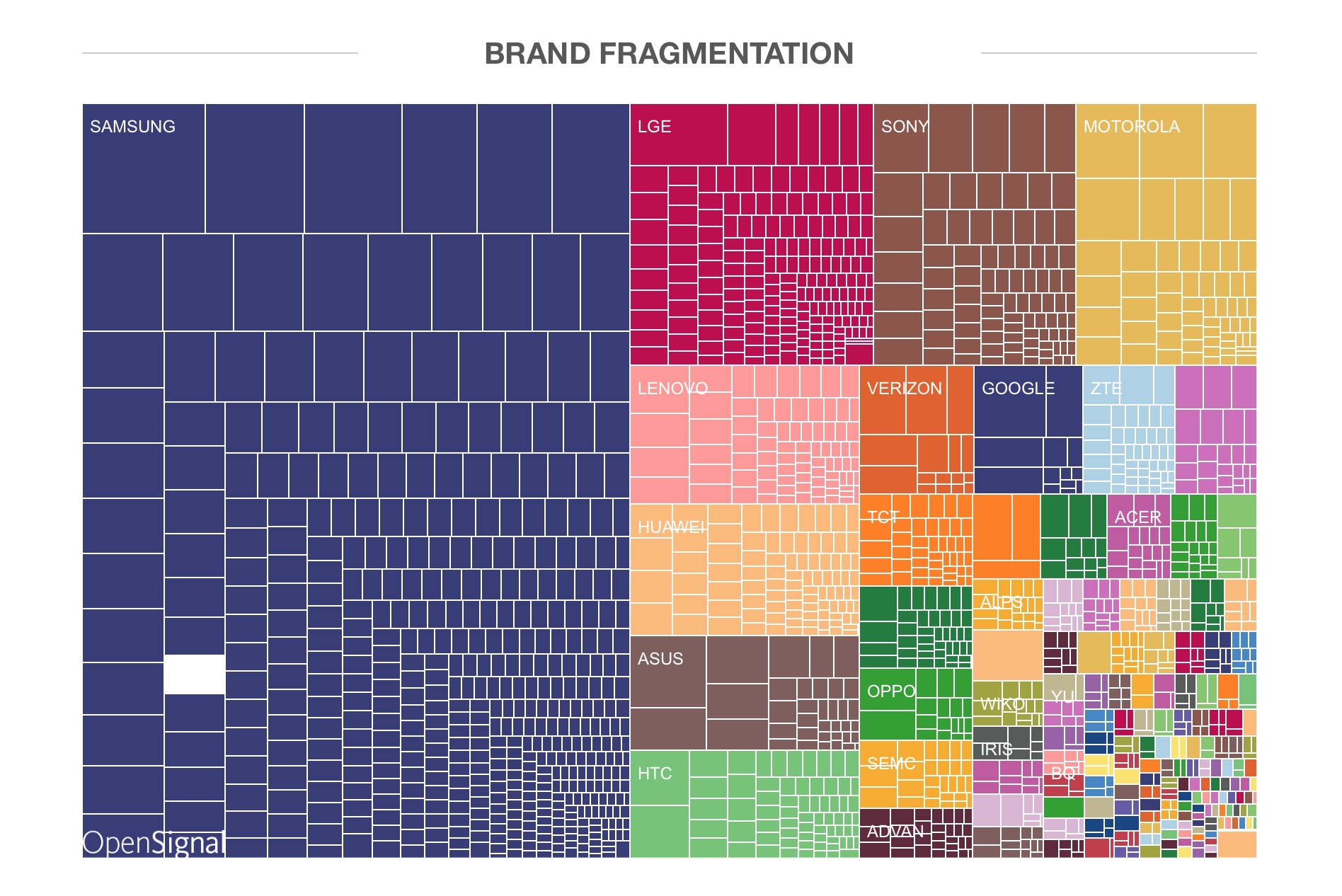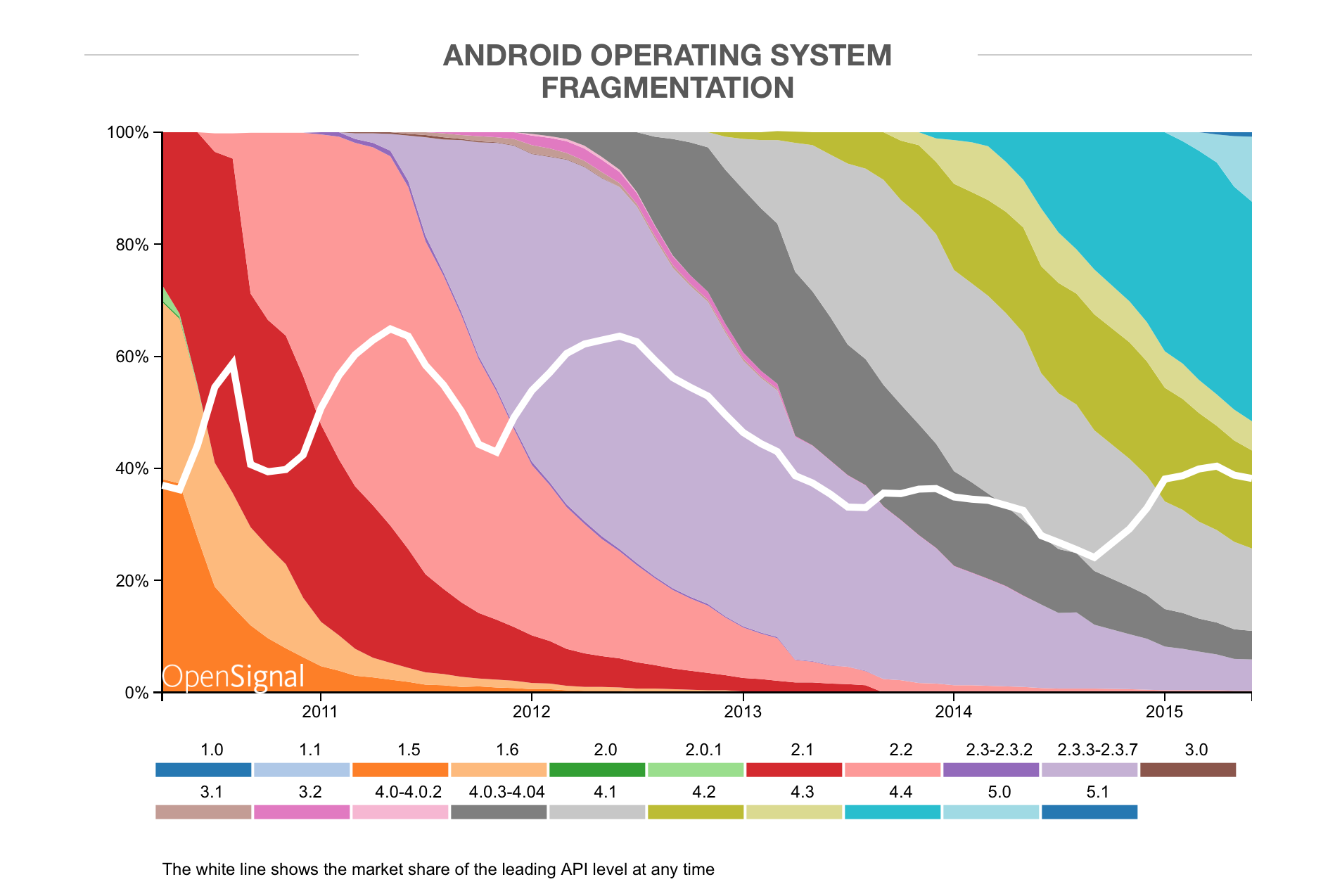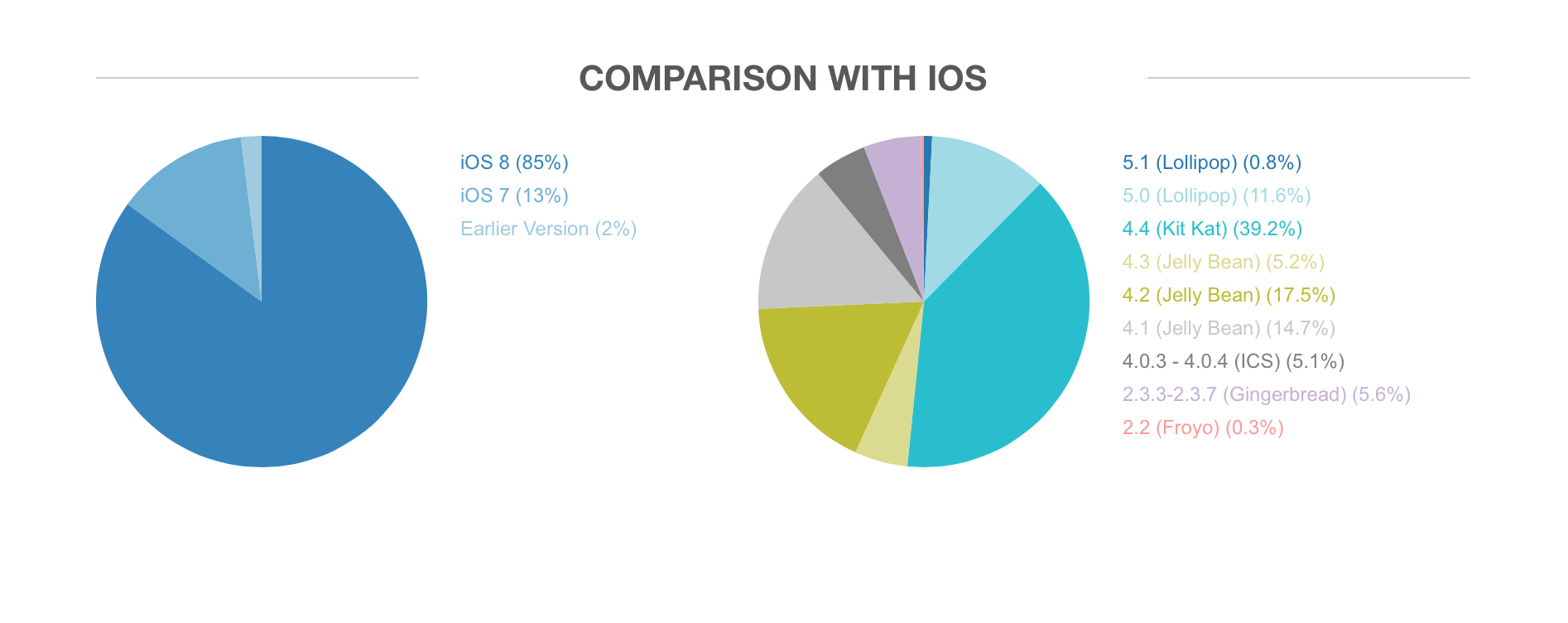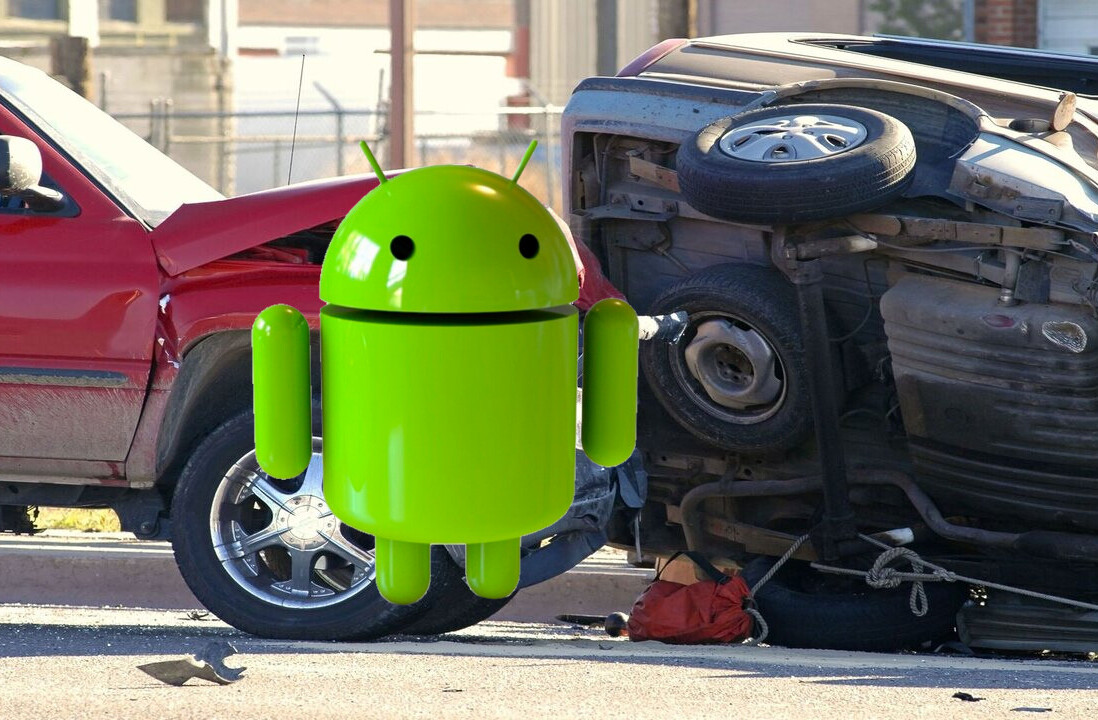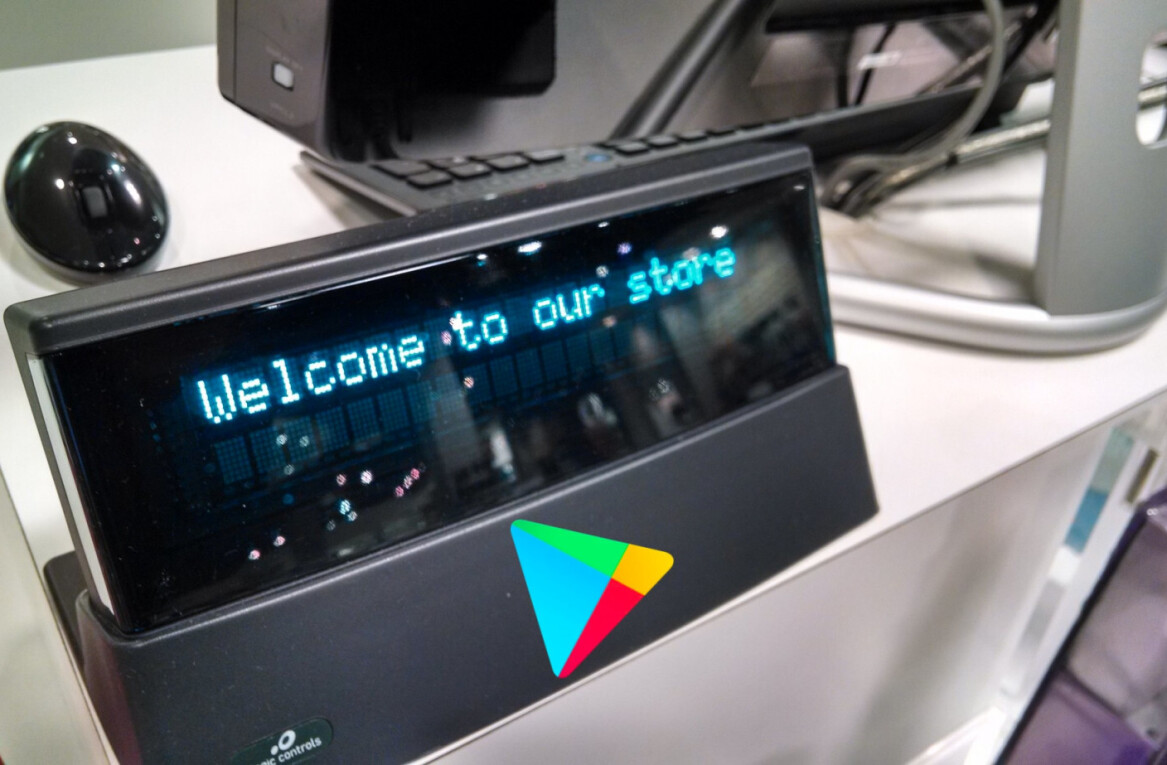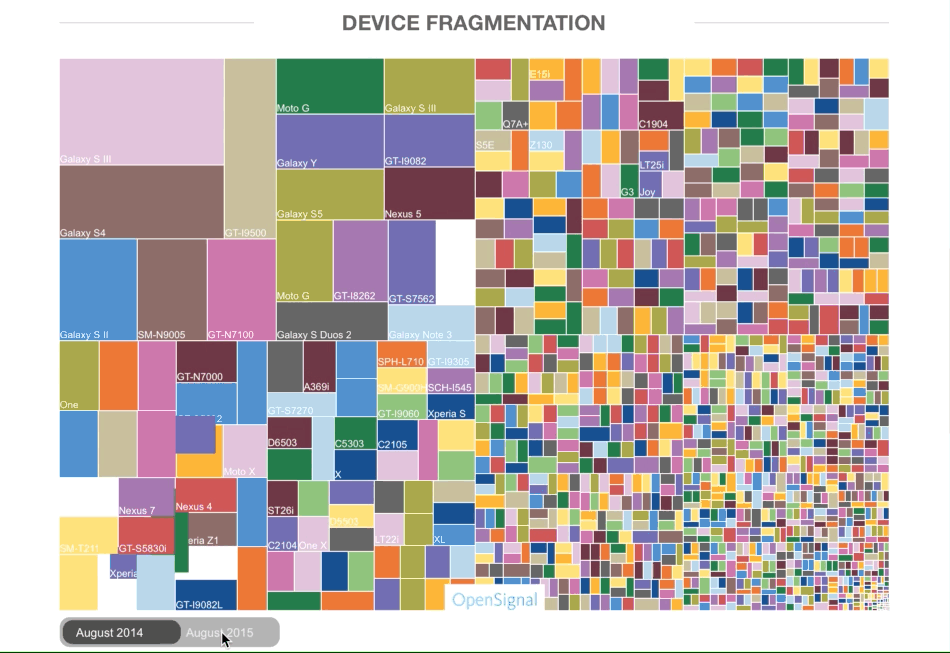
There’s no way around it: Android is a mess of disparate OEMs and legacy versions of the same operating system. While we get an idea of what’s really going on with Android from Google’s official numbers, Open Signal has again tapped its users to better illustrate (literally) what’s going on in Android land.
The survey is a sampling of 682,000 Android devices, 24,093 of which are new to Open Signal this year. Of the devices in this study, 37.8 percent were Samsung handhelds; a huge percentage, and even more impressive when you consider there are 1,294 manufacturers represented.
As you can see in the GIF below, there are a ton of different Android devices (the movement also represents how many more manufacturers there are in 2015 when compared to 2014). Though this represents one year, Open Signal says “in two years Android Fragmentation has more than doubled from the 11,868 we saw back in 2013.”
Brand fragmentation is also on display. While Samsung naturally carries the day here, a lot can be extrapolated from Open Signal’s graphic. Is there really a reason we need Verizon-branded handsets? We make quite a fuss about Xiaomi, but it’s in pink just to the right of ZTE — which rarely gets mentioned in the press, even though both companies are about the same size when it comes to Android devices.
Although you should always use the handset you like; the operating system is what really matters. Halfway through 2015, Android is still really messy with software.
According to Open Signal, 5.7 percent of Android handsets currently run a version of Android 2.3, Gingerbread. If we’re being fair, Gingerbread came out when iOS 5 did, which isn’t even represented (individually, at least) in this study.
Also interesting is the percentage of KitKat, which may have more to do with APIs. In Open Signal’s study, KitKat’s API level and operating system dominate into 2015. Bleeding edge platforms like Android 5.0 and 5.1 are well in the minority.
Compared to iOS, there are three times the versions of Android found in this study. Apple’s iOS 8 commands 85 percent of the handsets on test, with only 2 percent having anything prior to iOS 7. Android 5.0 and 5.1 (Lollipop) combine for a 12.4 percent share of Android software. To match iOS 8’s percentage, Android has to count all versions back through Jelly Bean.
Positively, Android OEMs are starting to figure out what sensors we want in a smartphone. Motion sensors and step counters are more standard now, while barometers and humidity sensors have tapered off.
Fragmentation is the gift and the curse of Android. It gives us all a lot of variety, but when is too much of a good thing just — too much?
➤ Android Fragmentation Visualized [Open Signal]
Read next: There are 18,796 distinct Android devices, according to OpenSignal’s latest fragmentation report
Get the TNW newsletter
Get the most important tech news in your inbox each week.

